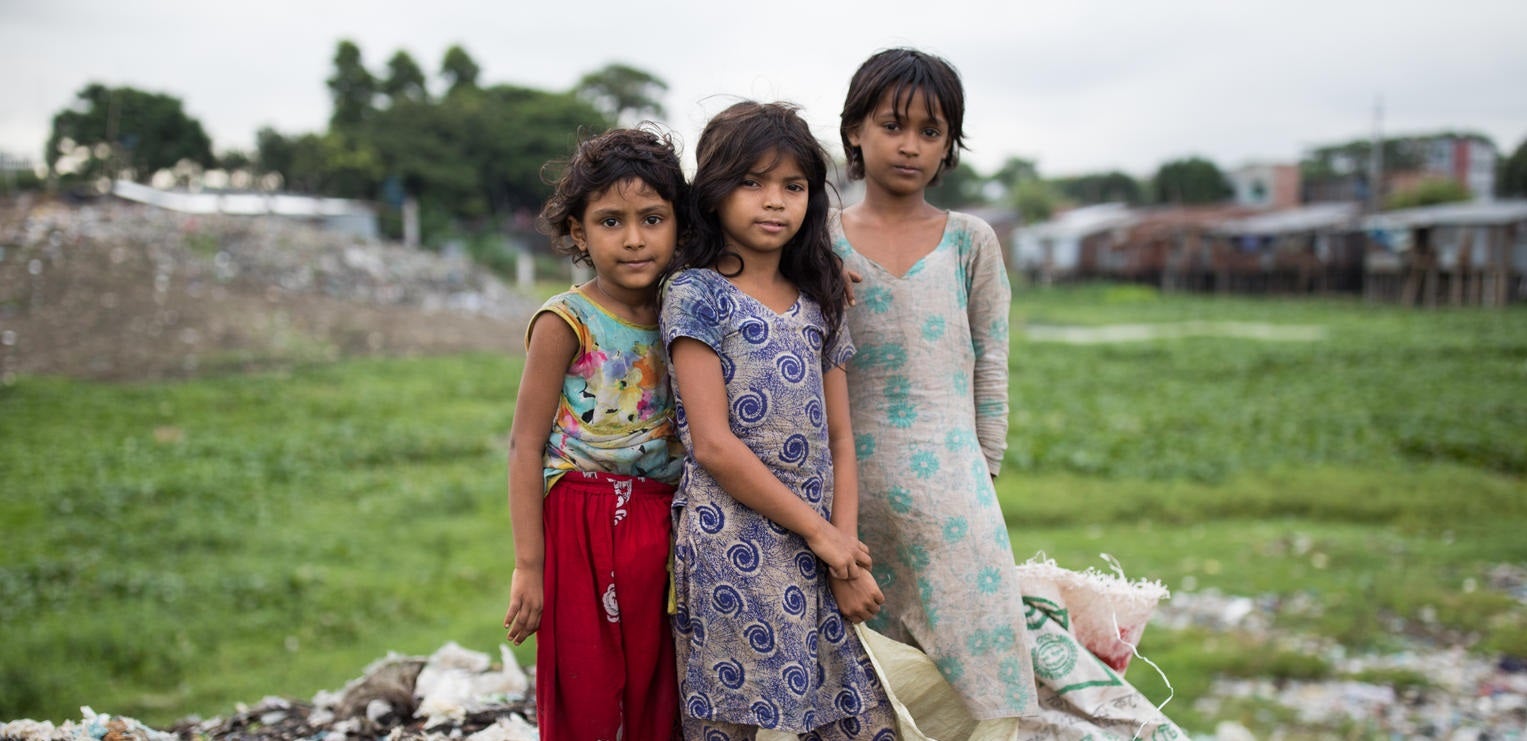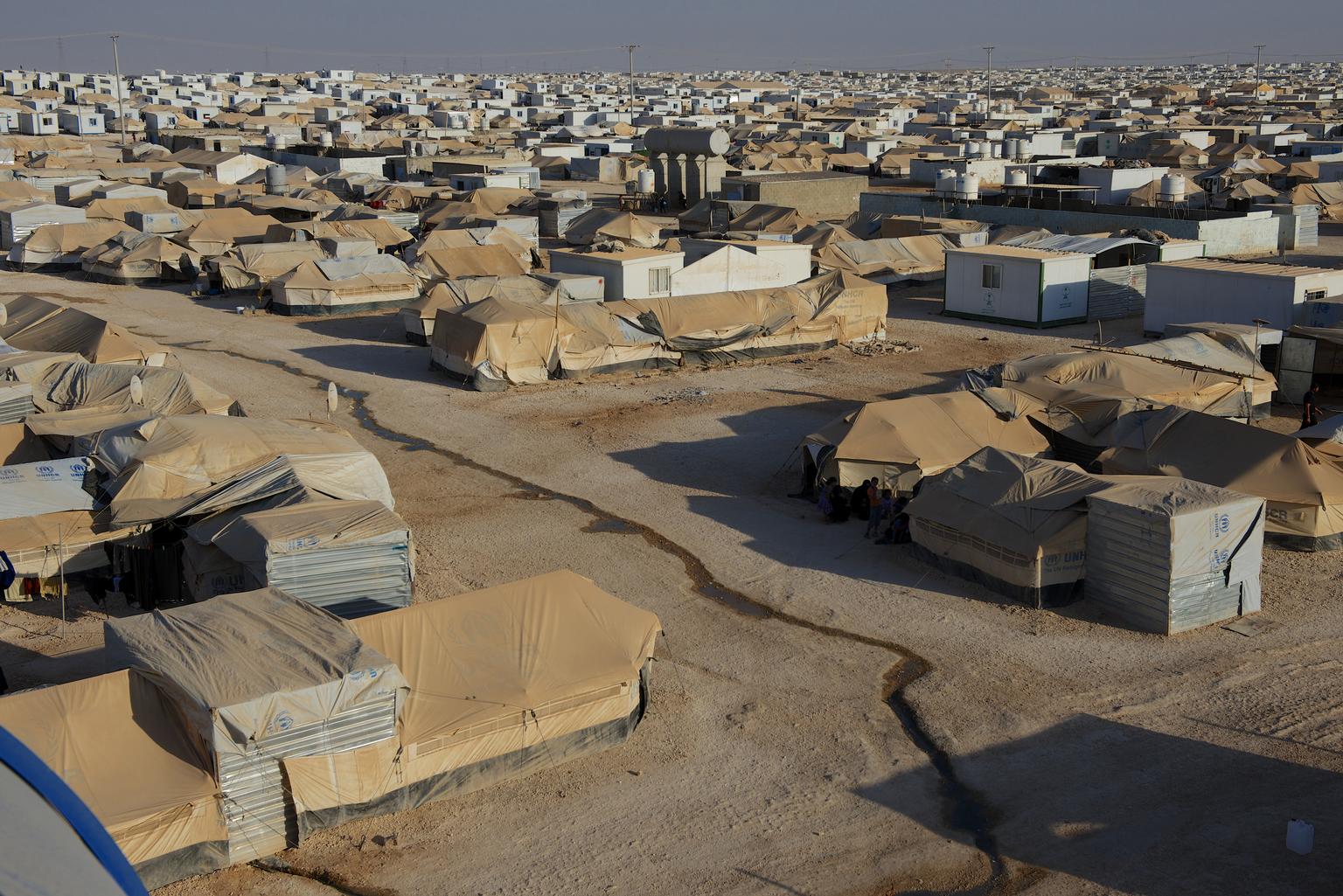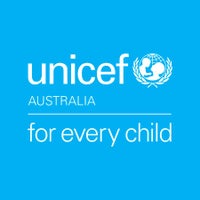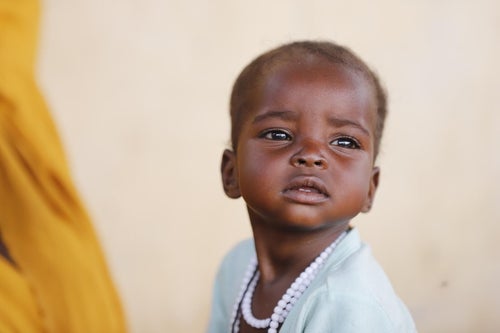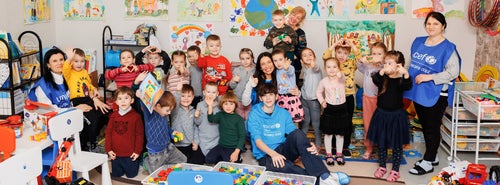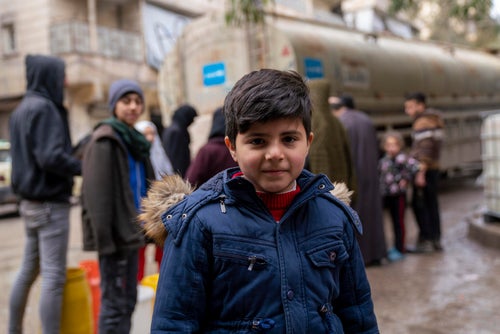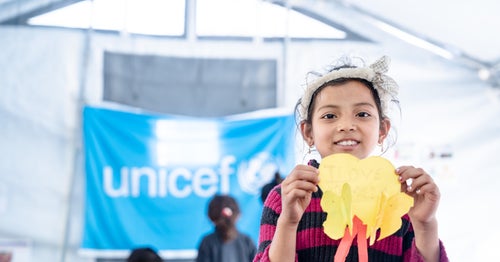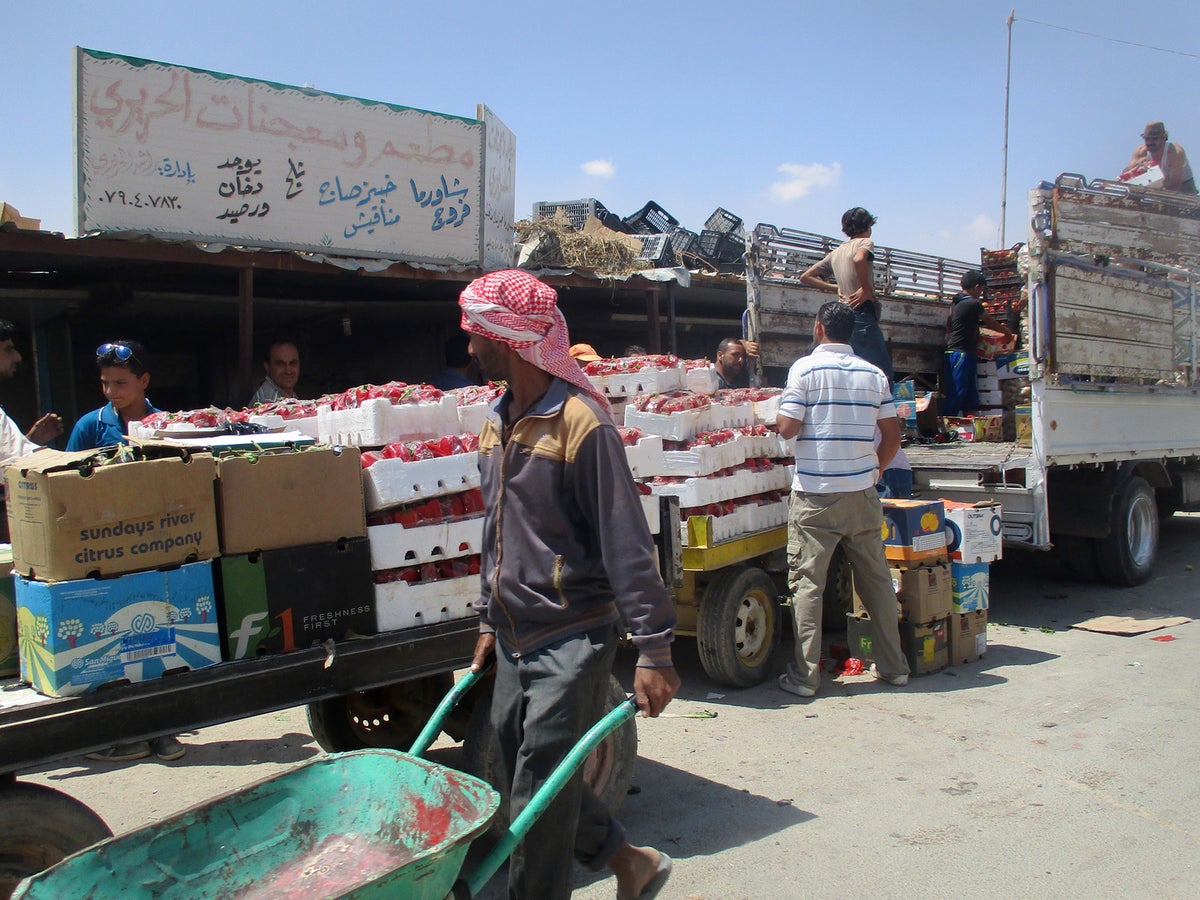
But today’s almost normalised scene could not be further from the mayhem that took place in 2012 when, over a period of six months, more than half a million people crossed the Syrian border into Jordan to seek refuge from conflict and violence.
Za'atari refugee camp, near the border with Syria, bore the brunt of the humanitarian response. At its peak, it accommodated more than 145,000 of the most desperate and vulnerable people.
“When I first arrived there were big issues to manage security and equitable services for children and women amidst the chaos of the emergency,” says Aussie Ben Smith, UNICEF Water, Sanitation and Health Specialist (WASH).
“Opportunists had taken control of water and food distribution creating inequalities and great instability throughout the camp. Women and children were the most at risk from disease and outbreak.”
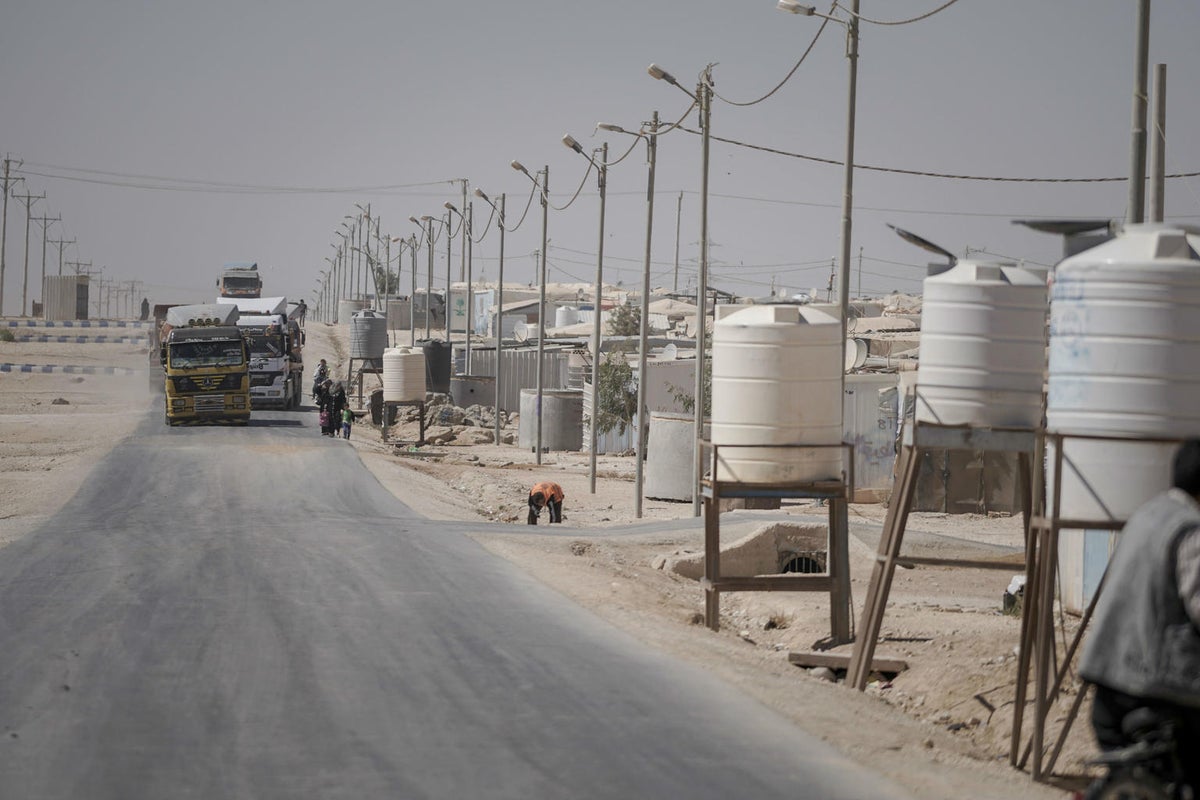
Ben, a water engineer originally from Canberra, moved to Jordan to help build and manage the desperately needed water and wastewater systems.
Initially, clean water was being trucked in and the wastewater was trucked out.
But the system was expensive, challenging to manage, unsustainable for the environment and difficult to ensure equity of services.
On top of this, women, teenage girls and children were not using wash blocks because the communal services were too far away from their tents and they didn’t feel safe at night.
As a result, people were taking materials and building their own private latrines, closer to their homes.
“They would build their own outhouse or latrine and then drain it to an open pit, right next to their house which would collect sewage,” Ben says.
“That meant there were 12,000 households in the camp all with an open pit - potential for a public health disaster.”
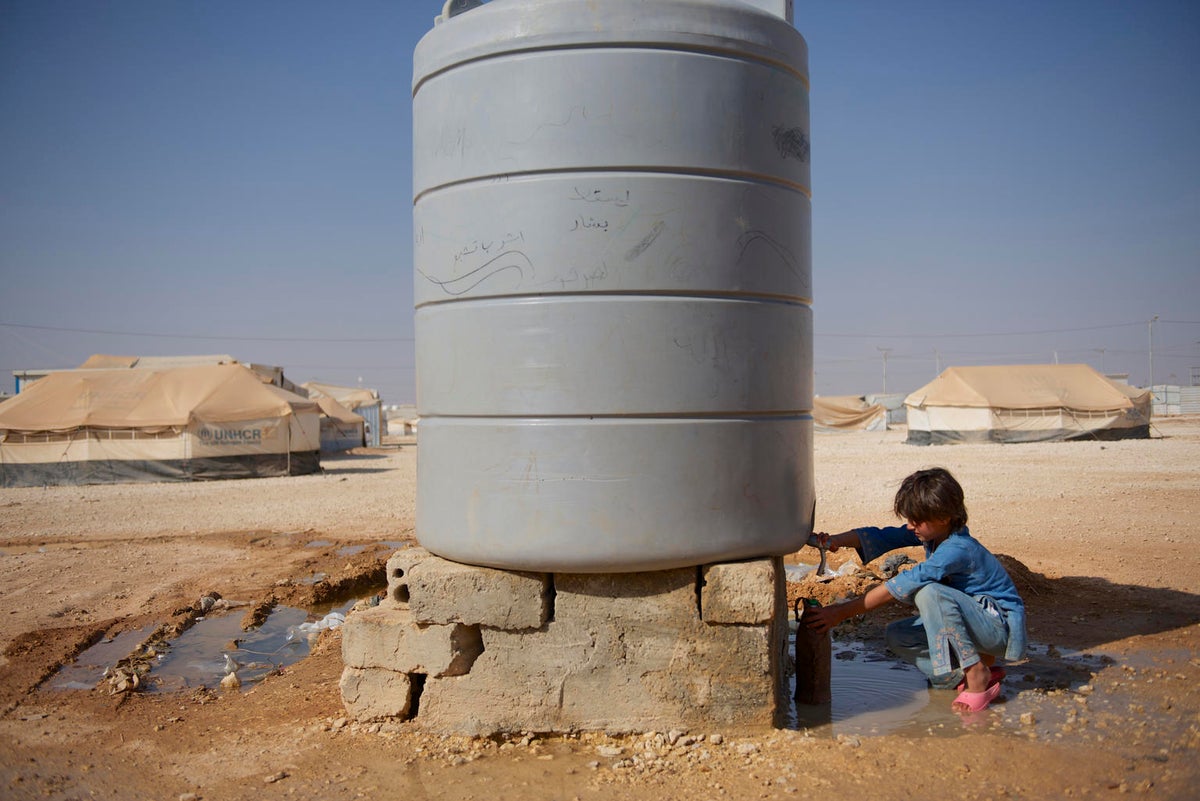
It is estimated that the average lifespan of a refugee camp is over 20 years, with refugees spending an average of 10 years living in a camp. As Jordan is one of the most water-scarce countries in the world, Ben says it was extremely important to push for long term, sustainable solutions.
UNICEF and partners built more than 3,000 septic tanks which collect wastewater from latrines and convey wastewater to an onsite treatment plant via a 125km network. Three, 500-meter-deep boreholes were also drilled to provide water directly to houses through a 300km water supply network.
“It has been a real success because we can control the quality of water and we can reach every household in the camp with their fair share of water,” Ben says, adding this is particularly important for female-headed households and families with children who have disabilities.
“At UNICEF, we don’t typically do construction projects of this size and complexity, but because of our leadership role in the humanitarian WASH sector area and the trust we have from donors, we were able to implement these works in Za’atari.”
"...we can control the quality of water and we can reach every household in the camp with their fair share of water."
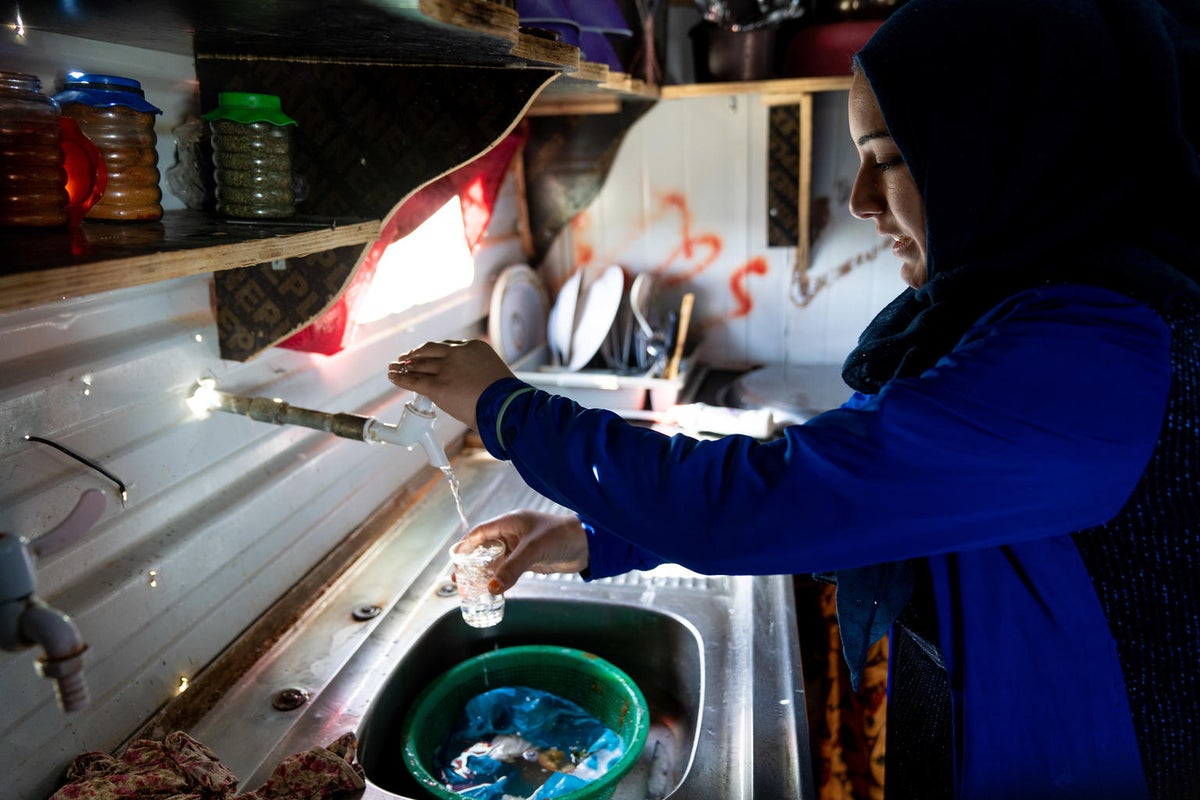
The wastewater systems have helped prevent major health issues like diarrhoea and Hepatitis A outbreaks. While there is potential for minor outbreaks to occur when new arrivals join the camp, Ben says they have not seen any of these issues in Za’atari.
“It absolutely comes down to public health management - particularly wastewater,” he says. “Having control over wastewater has a direct link to improved public health outcomes.
“With the networks, we can ensure a clean and safe environment for children and guarantee the cleanliness of water supplied to households.”
The systems have also helped improve equity with greater access to water and wastewater systems for women, children and those most vulnerable.
"..we can ensure a clean and safe environment for children and guarantee the cleanliness of water supplied to households."
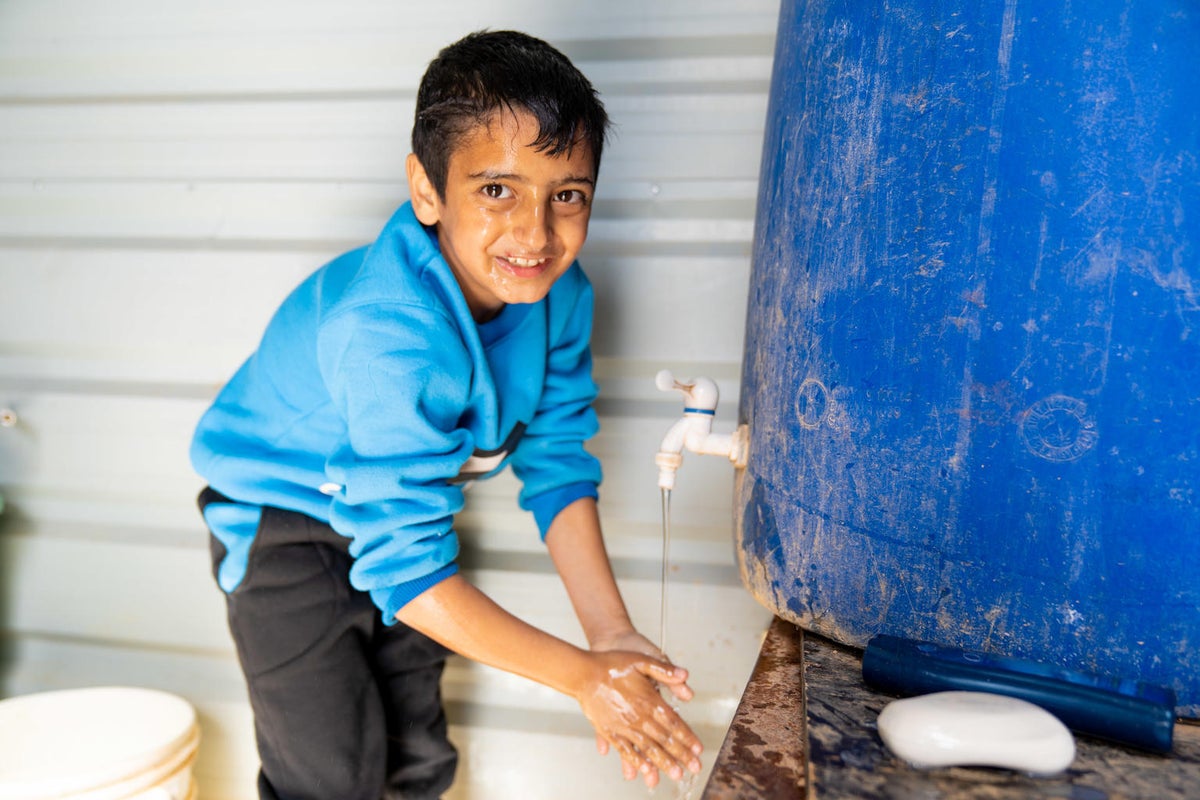
Despite its success, Ben says the project in Za’atari was incredibly difficult due to the logistical nightmare of building a water and wastewater network for a population nearly the size of Queensland’s Mackay after everyone has already moved in.
On top of this, there were challenges in importing construction materials into the camp and managing local contractors and construction in and around an active community, as well as the occasional unexpected hiccup - like finding over 120 unexploded ordnances (UNICEF worked with the local authorities and security experts to identify and clear these suspected unexploded ordnances).
“Sometimes when you are in the midst of construction it is only bad news,” he says.
“But when you are out in the field, you realise why you are doing this work. It is really uplifting to be invited into community households, to be offered sweets, to meet extended family and hear what an impact this has made on their lives.”
“When I visit families in the camp, they tell me how much life has improved since the water is delivered to their caravan. Now children have more time to spend outside playing football and studying for school - not standing in long queues in the sweltering heat waiting to collect water.”
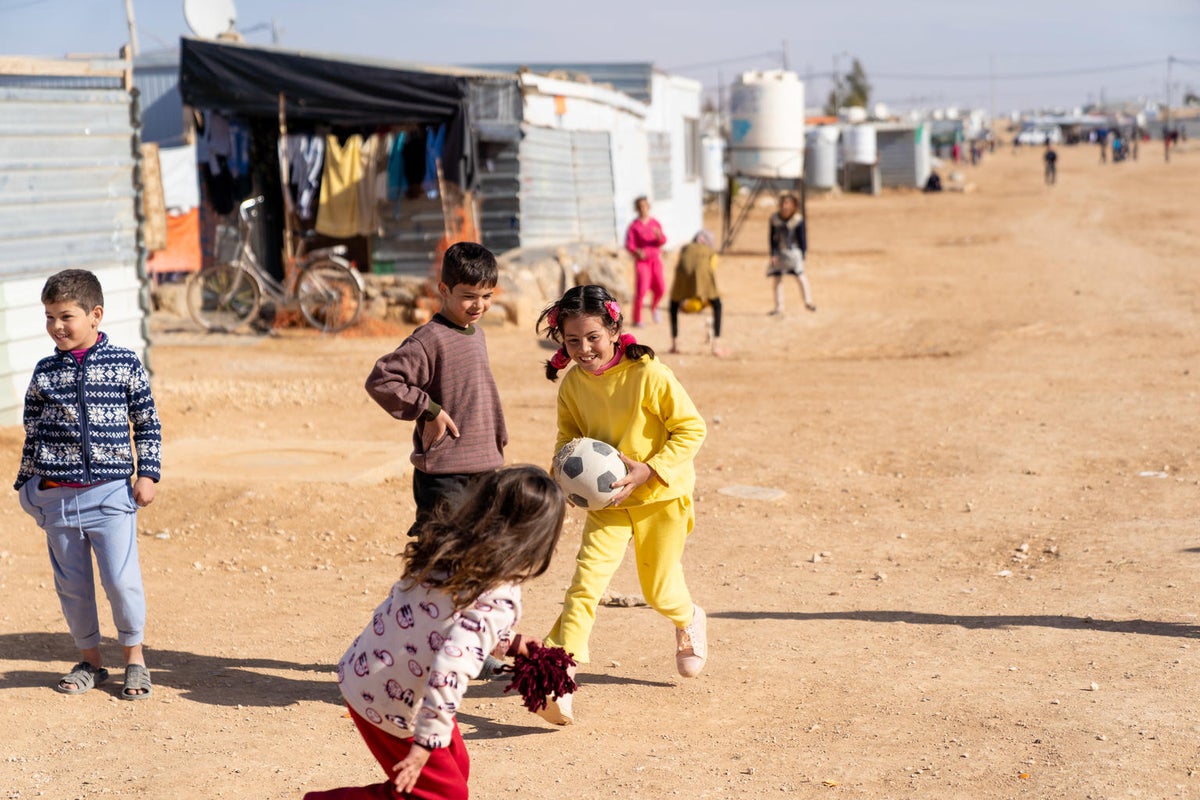
"I am looking forward to seeing what becomes of him."
One of those homes is that of 12-year-old Ahmad whose father was working with UNICEF on the water and wastewater project.
UNICEF first came across Ahmad when he introduced himself to the Ambassador of Japan to Jordan who was visiting a water tank near the 12-year-old’s home.
Fascinated by the construction of the new network, Ahmad built a replica of the system illustrating each part of the water system in the camp with LEGO bricks.
“I was amazed,” Ben says. “He is such a humble kid as well. He wanted to give it to me specifically. I couldn’t believe he had done this off his own back.
“I am looking forward to seeing what becomes of him.”
Ahmad plans to be a water engineer, just like Ben.
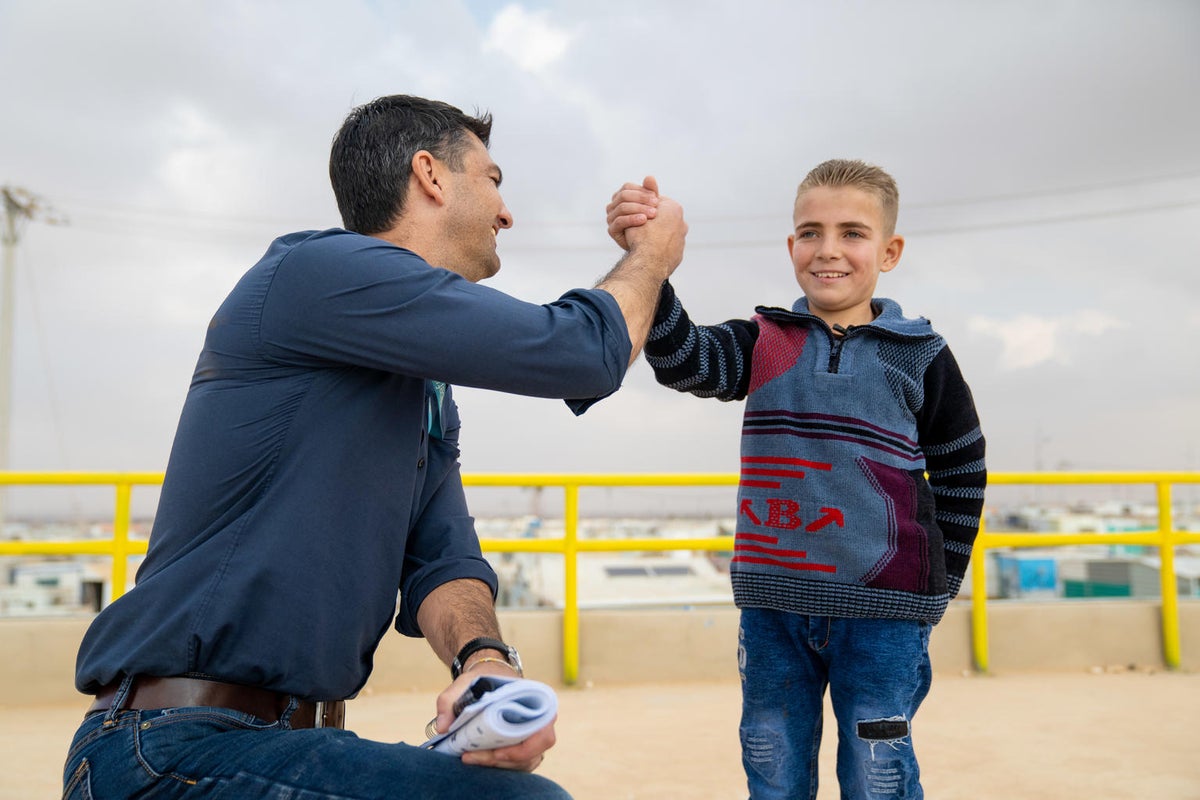
Related articles
Stay up-to-date on UNICEF's work in Australia and around the world


